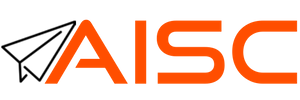As most of you probably already know, the FAA released its Part 107 regulations on Tuesday (Effective Date: 8/21/16). These regulations have been a long time coming. A really long time. And I can say, I’m pretty happy with the outcome.
I’m not going to do a point by point run down on the rule. I encourage everyone to read the full regulation as well as Advisory Circular 107-2 which is a guide for implementing the rule. I will, however, highlight some areas of Part 107 that may require technical support from a company like AISC. These areas will tend to apply to operators with limited manufacturer support or DIY builders.
- Airworthiness of the sUAS is going to be left up to the operator. From the FAA’s perspective, this means performing your pre-flight inspections and proper maintenance. It also means keeping good records and recognizing when you need to get technical assistance. If you do something to the sUAS that adversely affects the airworthiness, and there’s an accident, you will be held responsible.
- Part 107 permits transfer of sUAS control between certificated remote pilots under the condition they both have visual line-of-sight (VLOS) to the sUAS and it will not cause loss of control. If you need to use this capability, it’s extremely important the flight control system be tested thoroughly by simulation and/or flight test.
- Autonomous operations using flight plans are also allowed. The rule requires that the remote pilot be able to change the routing and altitude or command the sUAS to land immediately to avoid a hazard or yield right-of-way. This can be done by manual manipulation of the controls or via commands using automation. The right approach can be sUAS type and application specific, so you may be looking at flight control system development and coding. And as with (2), simulation and flight test will be needed.
- To operate in controlled airspace, the operator must seek authorization from the responsible air traffic control organization (ATO). Fortunately, the sUAS will not be required to carry certain equipment (e.g. a Mode C transponder), but the hazards of such operations must be examined and acceptable risk mitigation strategies presented to the ATO. An in depth knowledge of the sUAS failure modes and effects would be beneficial in demonstrating confidence in your operation. Simulation can also be used to demonstrate the flight as well as consequences of intentional actions and failures.
- A sUAS under this rule is limited to an altitude of 400 ft above ground level (AGL) and maximum speed of 100 mph. The FAA recommends several ways for obtaining this information. It will be up to you to choose which approach is best for your situation. That said though, you will need to establish the approach produces valid and reliable information. Engineering analysis and flight test would be two ways to meet those requirements.
- Flight in civil twilight will be allowed, but the sUAS must be equipped with anticollision lights that are visible for at least 3 statue miles. If you build your own lighting system, it will need to be tested for performance and integration into your sUAS.
- The FAA will allow an operator to apply for a Certificate of Waiver (CoW) from certain provisions of Part 107. If you apply for a CoW, you will need data and documentation to support your justification. This may include anything from a hazard analysis to test data for a subsystem.
- If a maintenance program is not provided by the manufacturer, the operator may create one (I strongly urge you do). If you have little experience with aviation maintenance, someone can create the necessary plans, procedures, and documentation for you. Third parties are also available for operators who wish to avoid certain types of maintenance.
- If an inspection program is not provided by the manufacturer, the operator may create one. Again, I strongly urge that you do. You can establish airworthiness via a pre-flight inspection as well as other types of scheduled and unscheduled inspections. And while AC 107-2 provides basic inspection guides, developing a detailed program for your situation is very beneficial. Good inspection programs require an in depth technical understanding of the sUAS.
- Knowing the effects of loading on your sUAS is paramount for safety of flight. This will be a topic in remote pilot training, but you still may need assistance in determining the weight & balance of a new sUAS, after modifications of an existing sUAS, or when carrying expendable payloads.
- Flight manuals may or may not be provided with a sUAS. In either case, you may need or prefer to have additional performance information in the manual or a supplement. This information is typically determine through engineering analysis, simulation, and/or flight test.
- Risk management plays a large role in safe operation of a sUAS. And while we all practice some form of risk management almost every day, you may not be familiar with the more formal approaches presented by the FAA. That’s ok as this is something that you will learn via training and experience. But, it is helpful to have assistance, especially when have to include technical aspects of the sUAS.
- Radio frequency (RF) spectrum usage is not covered by Part 107 because it is regulated by the FCC rather than the FAA. Fortunately, there are numerous RF bands that can be used for sUAS, but knowing which ones and the technical parameters (i.e. allowable transmit power, etc) is important to avoid running a foul of the FCC. And many sUAS datalinks can have interchangeable antenna and cables, so it is important to understand (usually via analysis or testing) how these changes will affect performance.
If you’re getting great support from your manufacturer, these areas will be taken care of for you. Otherwise, give us a call. The first consultation is free…
